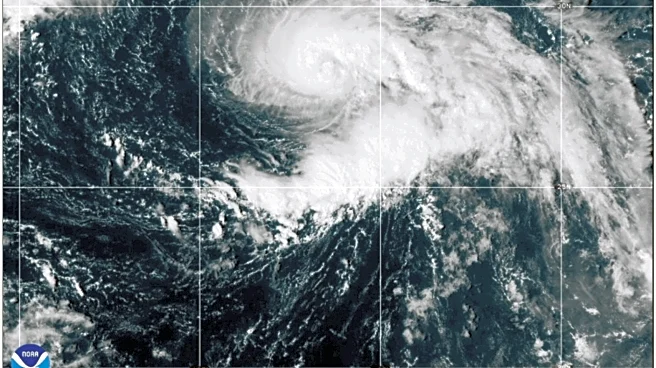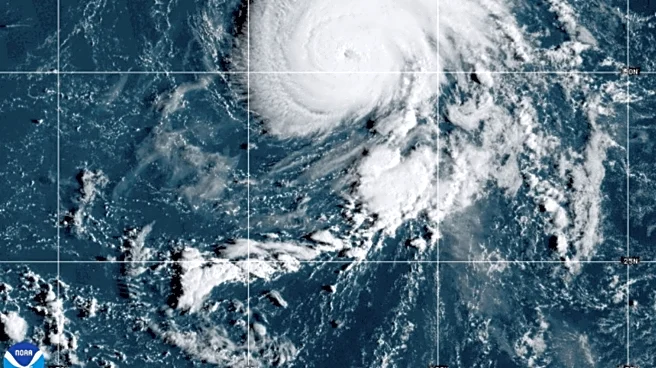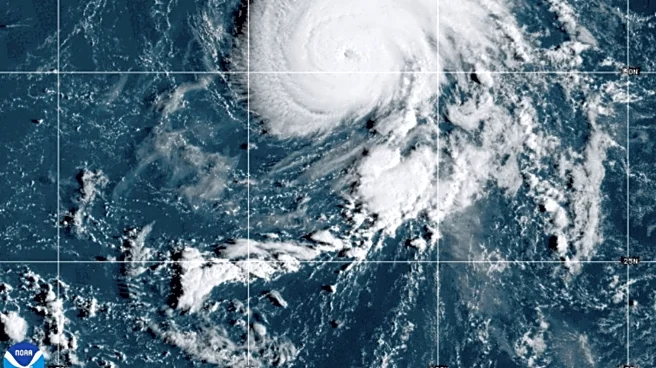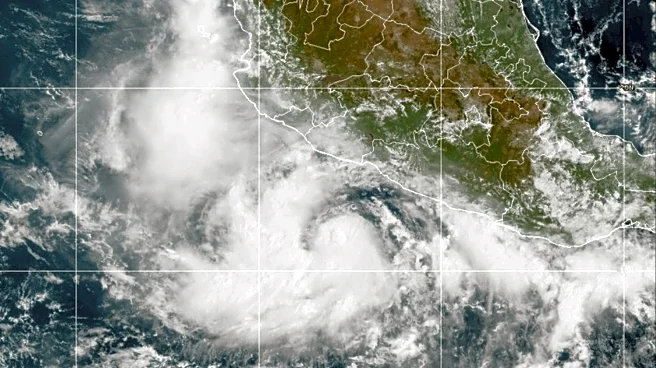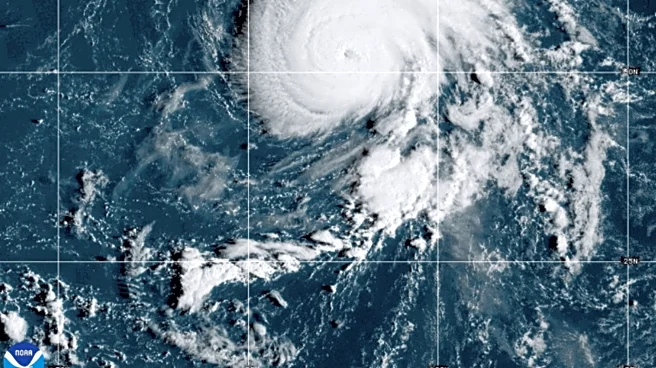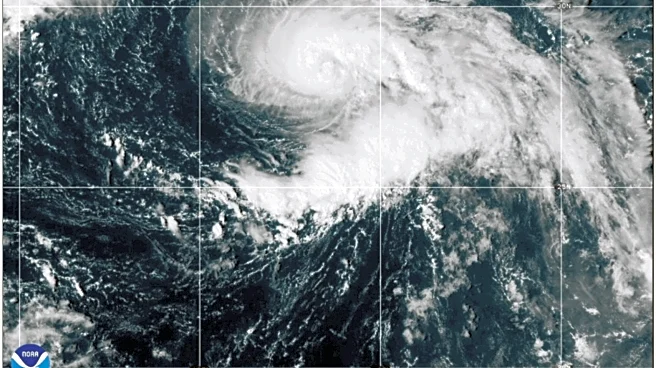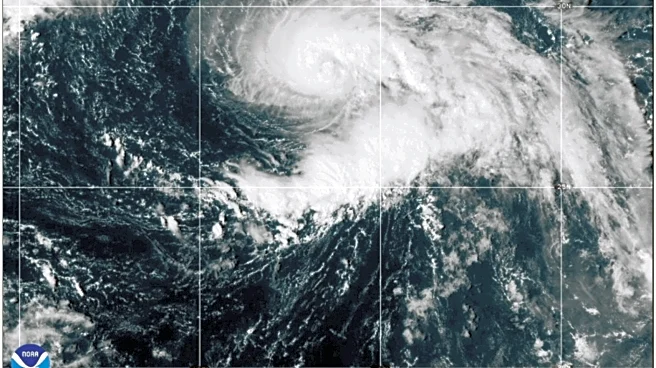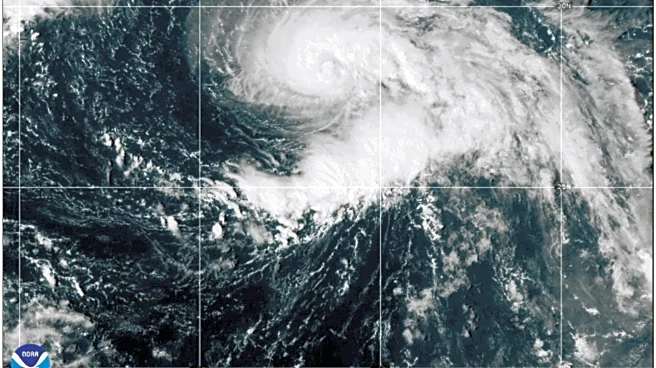What is the story about?
What's Happening?
Hurricane Gabrielle, a Category 3 storm, is advancing towards the Azores, prompting a Hurricane Warning for the region. The Azores, located approximately 850 miles off the coast of Portugal, are bracing for severe weather conditions including torrential rain, strong winds, and a dangerous storm surge expected to begin by Thursday night and Friday morning. The National Hurricane Center (NHC) reports that Gabrielle has maximum sustained winds of 115 mph and is currently located about 1,285 miles west of the Azores, moving east-northeast at 25 mph. The hurricane is expected to weaken slightly but will still maintain hurricane status as it passes through the Azores. Additionally, the NHC is monitoring two other systems, invests 93L and 94L, for potential tropical development in the Atlantic.
Why It's Important?
The approach of Hurricane Gabrielle poses significant risks to the Azores, including potential coastal flooding due to storm surges and destructive waves. The hurricane's impact is expected to extend beyond the Azores, affecting Bermuda, the U.S. East Coast from North Carolina northward, and Atlantic Canada with life-threatening surf and rip currents. This increase in tropical activity follows a lull in the Atlantic hurricane season, highlighting the unpredictable nature of weather patterns and the importance of preparedness in vulnerable regions. The situation underscores the need for effective emergency response and infrastructure resilience in the face of natural disasters.
What's Next?
As Hurricane Gabrielle approaches, residents of the Azores are advised to monitor weather updates and prepare for the impending storm conditions. Emergency services and local authorities are likely to implement safety measures and evacuation plans to mitigate the impact of the hurricane. The NHC will continue to track Gabrielle's progress and provide updates on its trajectory and intensity. The potential development of invests 93L and 94L could lead to further tropical activity in the Atlantic, necessitating ongoing vigilance and preparedness in affected areas.
Beyond the Headlines
The increased frequency and intensity of hurricanes in the Atlantic may be indicative of broader climate change impacts, raising concerns about long-term environmental shifts and the need for sustainable adaptation strategies. The situation also highlights the importance of international cooperation in disaster response and climate resilience efforts, as regions across the Atlantic face similar threats from severe weather events.
AI Generated Content
Do you find this article useful?


